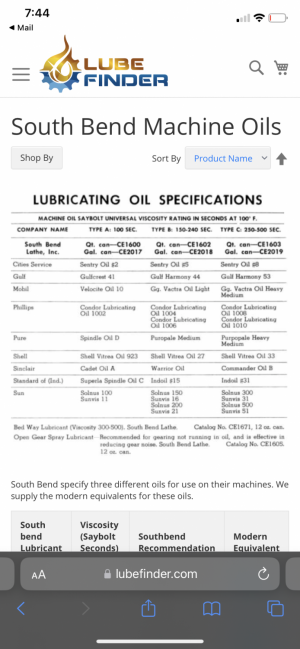They are top oilers. I’m thinking about putting felt in them. Also I switched to way oil in it and it seems to keep slightly better. I’ve been told “it is great shape”.
Not an expert here...but if the way oil "works", and your bearings aren't overheating it's because your clearances are too great. Spindles normally need very low viscosity ( I use SAE 10) because of the tight clearance and need to maintain a lubricating film between the parts. Way oil would normally be too thick to flow between the parts.
Why not do the South Bend style test? Put a DTI on top of the spindle, put a heavy wood dowel inside with around 12"-18" sticking out. Press down on the stick hard (50 lb or so), zero the DTI than pull upwards with the same force and see what you read. Do the same sideways for horizontal runout. IIRC, it should be around .0015 at most to be "in spec".
Hey, as long as the machine makes acceptable parts for your usage it "works". Knowing the machine and its foibles allows for a lot of workarounds.
I use mine for gunsmithing, so I need to hold a thou which it'll do fine with the DRO (never looked back after installing one- compensates for compound and cross screw wear). I agree on the carbide, modern inserts of the type that don't need to be pushed so hard work just fine and I use them for profiling, facing, threading, just about everything. I have only a handful of HSS special profiles for specific applications.
Love mine too lol. Properly maintained (and it's not used very heavily, run a few hours a week on average) it'll last another 75 years.


